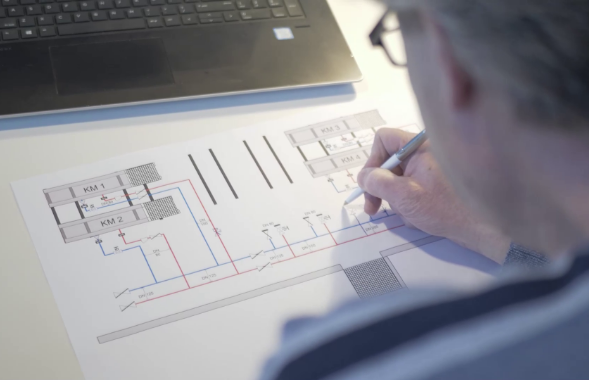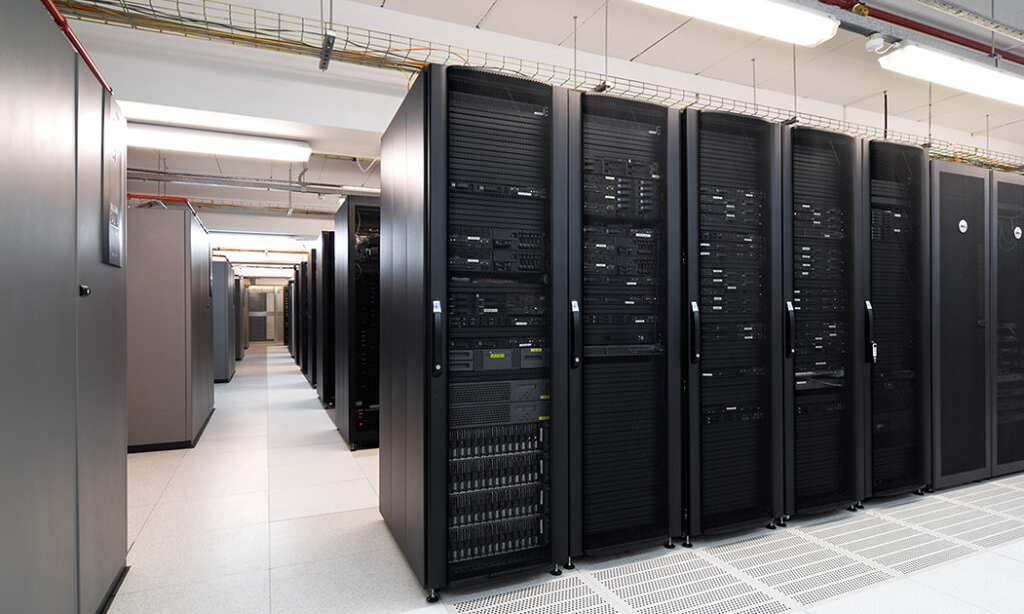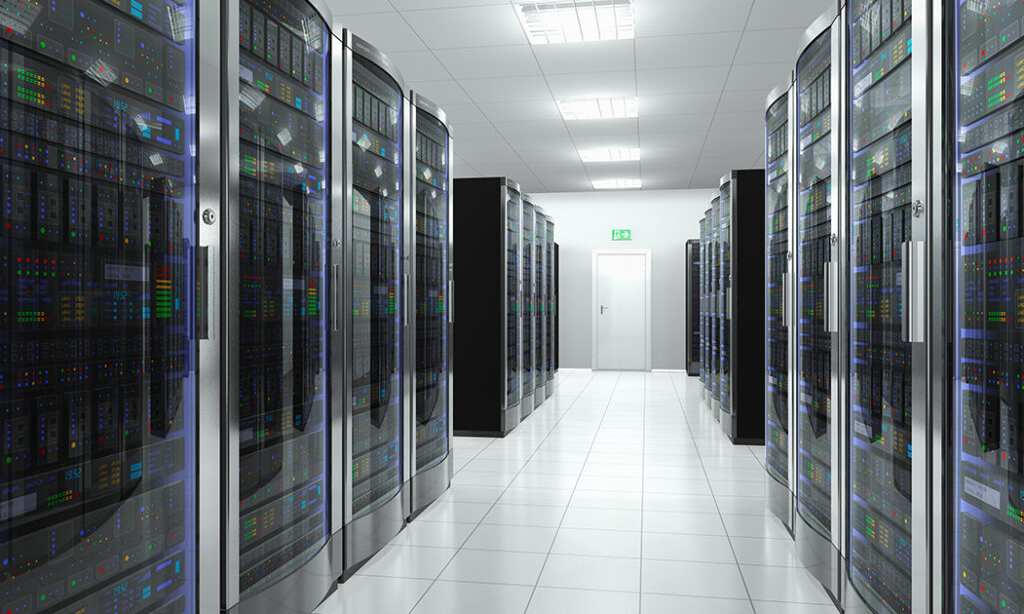IT cooling / Server room cooling
The best air conditioning for your data center, computer, server, or IT room.
Home / services / IT Cooling
Companies are becoming increasingly dependent on data. Outages of IT systems can cost you dearly. With the right cooling equipment, APAC helps keep your data available with the proper climate in your IT rooms.
Also for air conditioning maintenance, APAC is the right place for you.
APAC: specialists in IT cooling.
For your business processes, continuous availability of your data is essential. Dutch companies miss out on tens of millions in revenue annually due to IT system outages. With the right climate in your data center or computer room, you can prevent that. Cooling these spaces is therefore a critical process. Especially now that companies are demanding more and more computational power from servers and other computer systems.
Specialized knowledge and experience are required for optimal cooling. At APAC, you’ve come to the right place for that. We’ve been in the business for over 35 years. We know exactly under what conditions your equipment performs best and how we can create and maintain those conditions.
In the course of years, APAC has evolved into the specialist in datacenter cooling and server room cooling in the Benelux region. We provide the air conditioning you need and properly connect the necessary equipment.
Additionally, we exclusively collaborate with renowned brands and distinctive products. In coordination with manufacturers, we continuously seek even better solutions.




Want to learn more about your options?
For more information or a free quote, please contact us. We are happy to assist you with your project.
At APAC, we leverage the experience and knowledge we have built to further improve cooling systems. Through creative solutions and intelligent calculations, we contribute to many innovations.
We have developed several clever techniques in both cooling and control technology to save more energy. This applies to efficient cooling solutions for small computer rooms as well as large data centers.


Sustainability: a better environment,
a lower bill
Data centers and computer rooms are high consumers of energy. Therefore, it’s important to optimize that energy usage. This isn’t just better for the environment, but also for your energy bill. That’s why we fully commit to sustainability.
With our efficient systems, your energy consumption decreases significantly. We provide the best solution for your situation, allowing you to save energy and costs. For example, we help you reuse the excess heat from the computer room in your building.
Whether you have a large data center or a small computer room, cooling is a significant component of your IT budget. We are here to help you manage your costs with innovative custom solutions.
The specialists at APAC analyze your computer room and collaborate with experienced consultants and installers. Based on this analysis, they design a cooling concept that fully meets your needs. This ensures that your IT equipment performs optimally and that you have continuous access to your data.
Frequently Asked Questions
Without cooling installed, the temperature in a server room largely depends on the total power of the equipment in the room. With just a few computers, the power consumption can quickly exceed 2000 watts, equivalent to an electric heater with the same power. Therefore, it’s predictable that the temperature in a server room without cooling will quickly rise too high. In addition to the heat generated by the computers, there are other factors contributing to the temperature in the server room, such as the outside temperature and the insulation value of the room. Rooms facing south with relatively many windows will experience heat problems more quickly in summer than, for example, basements. The cooling system in the server room should be designed to account for these factors. There are examples of temperatures exceeding 60°C in a computer room that was not (or no longer) cooled.
The ideal temperature for a server room is 21-22 degrees Celsius, especially when a UPS is located in the room. If the temperature is significantly higher or lower, it can lead to consequences for the computers such as increased wear and higher energy consumption. The likelihood of malfunctions also increases as the temperature deviates from the ideal value. Therefore, it’s important to ensure that the temperature of the server room is kept under control through cooling. Ideally, the temperature should be kept as constant as possible. When a separation of warm and cold airflows is implemented in the room (cold and warm aisles), Ashrae guidelines can be followed. The temperature of the air blown by the air conditioners becomes important in this case. Ashrae provides guidelines regarding this aspect as well as regarding humidity or, in other words, the moisture content of the blown air.
The relative humidity in server and miner rooms is also important. According to the American Society of Heating, Refrigerating, and Air-Conditioning Engineers, the ideal relative humidity is between 40 and 55 percent. If this is higher or lower, humidifiers or dehumidifiers can be used accordingly, depending on the specifications of the installed server equipment and other electronic components.
There are many misunderstandings about the term “free cooling.” Essentially, in the general sense, “free cooling” refers to cooling a computer room without using a cooling compressor. This doesn’t mean that there isn’t a cooling compressor available in the cooling system, but it’s only used in exceptional situations.
How do you then cool “freely”?
By cleverly utilizing the low outside temperature. Throughout the year, a large part of this time (8760 hours), the outside temperature is lower than the temperature in the computer room.
It goes too far to delve into various techniques that make it possible to cool the computer room cleverly and energy-efficiently using these “lower” outside temperatures.
Usually, this is done by simply running a pump and/or a fan.
So, there is a variety of “free cooling” techniques available on the market.
Simply put, direct free cooling means that cool outside air (treated or untreated) is blown directly into the computer room for shorter or longer periods.
Disadvantages of this cooling method are: No control over the humidity in the room and pollution in the room because dirt from the outside air remains in the room.
A few simple tips to save energy. Separate cold and warm air in the computer room. Set the temperature in the room higher. (Cooling equipment becomes more efficient as a result)
Where possible, move less air; moving every cubic meter of air consumes energy.
Adjust the regulation of humidification and dehumidification to the specifications of the computer supplier.
The cooling equipment must be well maintained and remain so. A specialist ensures the perfect setting and a maximally clean installation.
Experience teaches us that there are many different solutions when it comes to effectively cooling server rooms and associated IT equipment. There are several aspects to consider.
For example, consider the desired cooling capacity, which should be equal to the installed electrical power of the servers and peripheral equipment (heat load), the reliability, whether a backup unit is desired to take over cooling of the room in case of a malfunction (N+1 redundancy), the desired room conditions, the room temperature and humidity should be within the allowed operating range of the servers, the air circulation, whether the layout of the server room allows cold air to reach everywhere, whether through a raised floor or not (preventing “hot spots”), and finally, cost efficiency, whether the system is set up to maximize the efficiency and return on investment of the cooling systems.
Also important is the minimum energy efficiency of the cooling installation. Some municipalities in the Netherlands have requirements regarding this.






